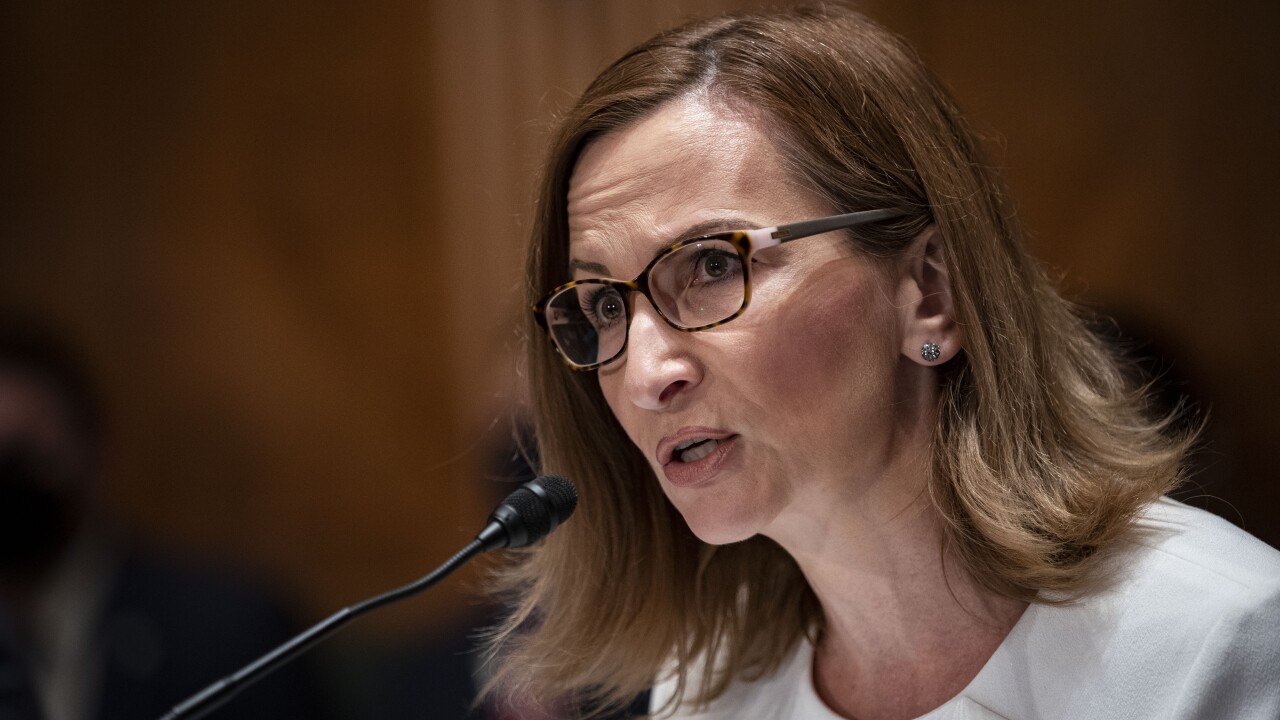Traditional banks are going to have a harder time in coming months keeping deposit costs low to safeguard margins.
Like a lot of problems, this one has been brewing awhile. At online-only banks, including Ally Bank, Goldman Sachs, Synchrony Bank and Sallie Mae Bank, deposit growth in recent years has been faster than the national average. And they did it at a time of static rates because they sought to build market share and their branchless retail networks are less costly.
Deposit growth at the $164 billion-asset Ally’s is especially notable. It had $79 billion of deposits at Dec. 31, a 19% increase from a year earlier and a 417% increase from 2007. The average growth for all U.S. banks since 2007 was 9%, according to Fitch Ratings.

With interest rates expected to rise perhaps twice this year, there is a strong possibility that Ally and the other Internet banks will boost their rates on certificates of deposit and other deposit products, said Lindsay Weisensel, product development coordinator at RateWatch in Fort Atkinson, Wis. That could further eat into traditional banks’ deposit base.
All of this should cause concern for executives at traditional banks because they could lose a critical low-cost source of funding for loan growth at a time when the economy is rebounding, said Neil Stanley, CEO of The CorePoint in Omaha, Neb., which advises community banks on deposit strategies.
“The combination of growing loan demand and rising interest rates provides a double incentive for banks to grow deposits,” Stanley said.
But banks are caught in tricky situation. They have only recently been able to raise rates on loans, and they want to create some lag time before also increasing their own funding costs. Yet they also don’t want to get left behind in attracting new depositors.
Most banks seem to have decided to stand pat for now. Since the Fed raised rates in December of 2015 and 2016, the average rate on most deposit products has barely moved. The average rate on a savings account with less than $100,000 was 0.06% as of Jan. 30, according to the Federal Deposit Insurance Corp. That’s close to the lowest levels ever recorded, Stanley said.
“The market competition really hasn't changed dramatically, so we are not seeing any craziness in the marketplace,” Tom Brugger, chief financial officer of the $2 billion-asset Sun Bancorp in Mount Laurel, N.J., said in response to an analyst’s question about deposit costs during a Jan. 31 conference call.

But online banks already pay more on CDs than retail banks. The national average rate on a 12-month CD for $10,000 was 0.27% for all banks as of Feb. 1, according to RateWatch. For online banks, the average was 0.79%.
If traditional banks see significant amounts of runoff from their low-cost deposits, they will either have to pay depositors more if they want to keep them or turn to other, costlier ways to fund loan growth. Those can include unsecured debt or wholesale securitized funding, Those can include unsecured debt or wholesale securitized funding, said Michael Taiano, director of the financial institutions group at Fitch Ratings.
Ally Bank has been doing the exact opposite, as its mix of deposits versus unsecured debt has been shifting towards deposits. Jason Goldberg, an analyst at Barclays, estimates that Ally’s current level of $12 billion of unsecured debt will roll off the books over the next four years and Ally won’t need to replace any of it with more debt. Instead, its deposit growth will replace it. Ally has estimated it will see about $40 billion of additional deposits over the next three to four years.
That would spur a big improvement in Ally’s net interest margin, CEO Jeff Brown said during the company’s fourth-quarter earnings conference call.
“The biggest piece of the NIM expansion on the cost-of-funds side will be really just the absolute growth in deposits versus the unsecured debt coming down,” Brown said.
Traditional banks have options for retaining some of their core funding, Stanley said. Banks can make special deals with the largest customers to keep many of those deposits from fleeing for higher rates.
Banks can also explore the concept of refinancing deposits, which was popular in the 1980s, Stanley said. A customer can switch a fixed-rate deposit product to a new higher-rate product in exchange for a fee without having to wait until maturity, he said. That lets the customer take advantage of rising rates but still gives the bank some protection against rising deposit costs.
Mostly, executives at traditional banks may have to offer higher rates on CDs and other savings accounts, or risk being left behind.
“The competitive forces are going to dictate that banks offer higher interest rates to attract and retain the funding they need,” Stanley said.





